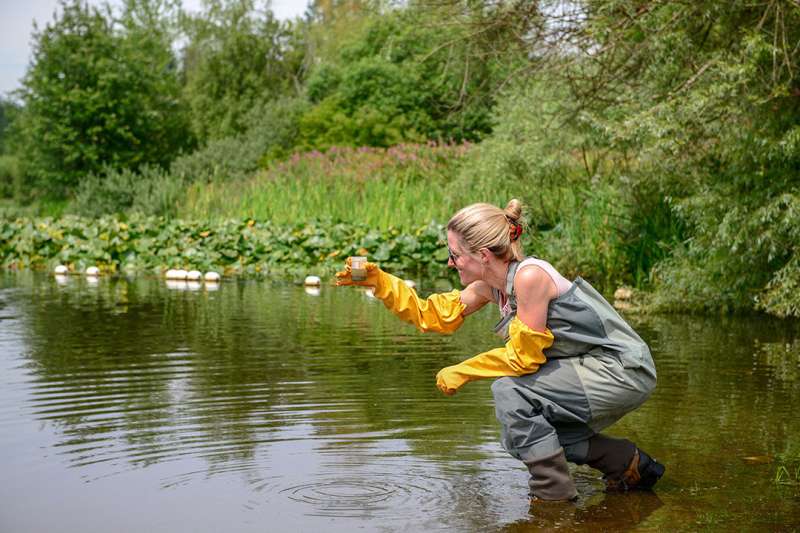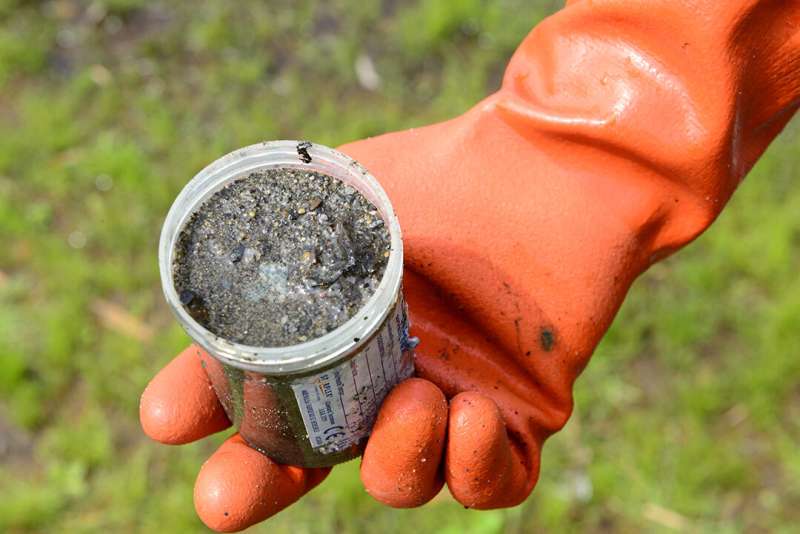Detecting bird flu before it's ready to take off

Known as "bird flu," avian influenza is transmitted from wild ducks to chickens and other domestic birds. While the virus doesn't cause any symptoms in ducks, it's deadly for domestic birds and can decimate entire flocks.
Canada is committed to maintaining its disease-free status to avoid trade restrictions being placed on the country's poultry products. To do so, Canada must screen for avian influenza in wild birds so that veterinary and public health officials can prevent and control any outbreaks. The current screening method involves testing live and hunted birds, but this method isn't very effective.
"Wild birds that die naturally of other causes are brought in [to the lab for necropsy and avian influenza testing]," said Dr. Chelsea Himsworth (DVM), a University of Saskatchewan (USask) alumna and diagnostic pathologist and leader for veterinary science at British Columbia's Animal Health Center, which is a branch of the B.C. Ministry of Agriculture. Himsworth is also regional co-ordinator of the Canadian Wildlife Health Cooperative B.C., and an adjunct professor with the Western College of Veterinary Medicine at USask.
"The current method of passive surveillance is like looking for Ebola in car crash victims—the two are not related," she said. "It's no wonder we don't detect it."
The B.C. Animal Health Center is located in Abbotsford, part of the province's Fraser Valley. Each year, Himsworth and her colleagues witness the migration of wild birds through the second-densest area of poultry production in Canada.
In 2014-2015, passive screening failed to detect a highly pathogenic strain of avian influenza that was circulating among wild ducks in B.C. When this strain of avian influenza got into the province's domestic poultry population, 240,000 birds died or had to be culled.

Frustrated by the inadequacy of current avian influenza surveillance methods, Himsworth and her team set out to find another way to detect avian influenza in wild birds before any further outbreaks in poultry occurred.
In 2015, they developed a new genomics technique for detecting avian influenza virus in wetland sediment—a rich source of material because avian influenza virus is shed in bird feces. Each sediment sample contains contributions from multiple individuals and species, making sediment sampling more effective than traditional methods of sampling individual birds.
"Wetlands are Mother Nature's outhouse," said Himsworth. "A little bit of pond scum can give us a lot of information."
However, the scientific process isn't as simple as developing a technique that works, dusting wetland sediment off your hands, and moving on. The next step is to iron out the remaining kinks so sediment surveillance is a neatly packaged product that can be easily completed in a lab. The major challenge is that the B.C. Ministry of Agriculture doesn't have the genomics resources required to do this.
Lacking the resources required to create packaged products isn't an issue that is unique to avian influenza. Other researchers within the province's Ministry of Agriculture and Ministry of Health face similar challenges when trying to apply genomic technologies to their own disease surveillance initiatives.
"There are a lot of pieces on the board," said Himsworth. "We're still talking about all the potential models, including what it might look like to have a health-agriculture partnership to support an applied genomics center."
Sharing resources and expertise would not only assist provincial ministries in achieving their mandates, but a One Health genomics center could also be a solution for the larger need to develop genomics capacity and co-ordination.
Provided by University of Saskatchewan


















